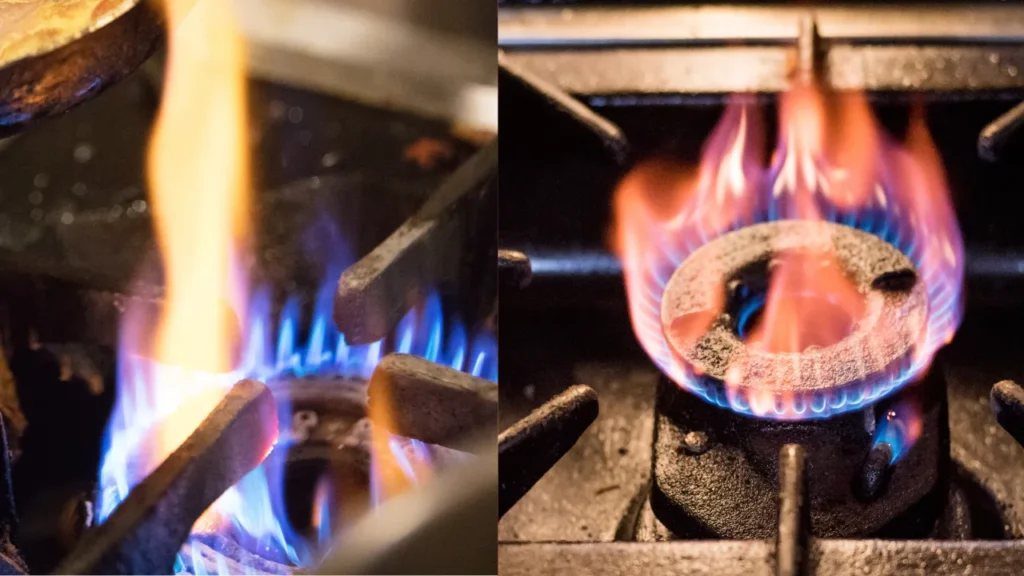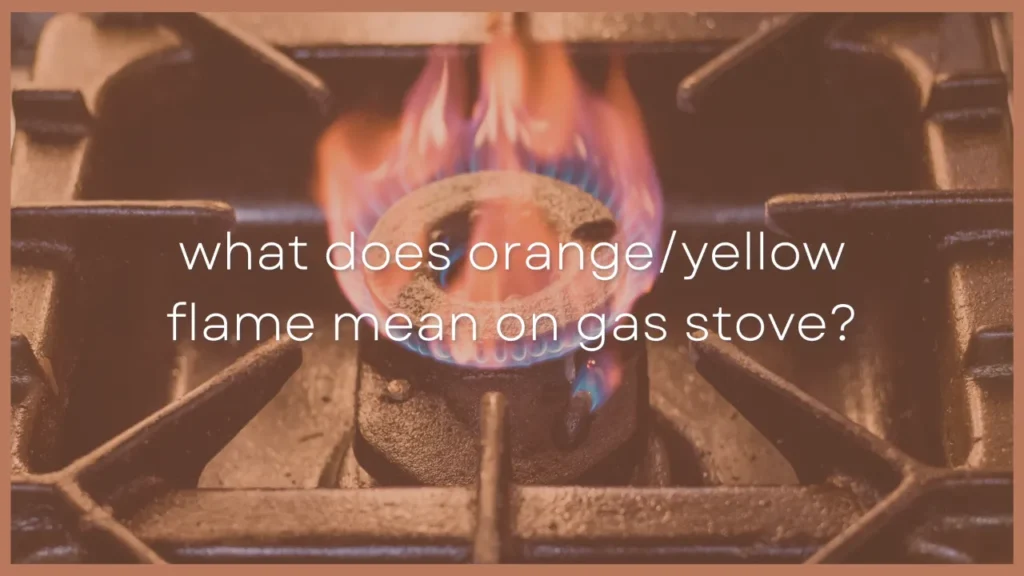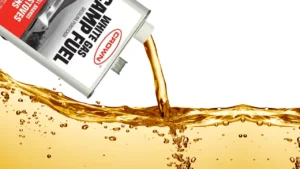If you have a gas stove, you probably know that it’s designed to burn with a blue or blue and transparent flame. This means it's burning efficiently and cleanly.
Firing up my gas stove the other day, I saw that it was burning with a yellowy/orange flame which is not ideal for a heat output, fuel consumption, air safety or soot/residue standpoint. All around you just don't want this to be happening.
There are various reasons for your stove to be putting out an orange/yellow flame and the fixes can be quite simple.
An orange/yellow flame on a gas stove means that it’s not combusting with enough oxygen, has an incorrect air to fuel ratio and producing higher levels of carbon monoxide, a dangerous gas.
This could be due to dirty or clogged burner plates or pilot holes, misaligned parts, a faulty orifice or badly adjusted air shutter. It can also happen if you’re using a humidifier close by.
Excess carbon monoxide can make you seriously ill and even be fatal, which is why you should always take a yellow/orange flame seriously.
Reasons To Worry About an Orange/Yellow Flame on a Gas Stove

The main reason you should worry about an orange or yellow flame on your gas stove is the presence of carbon monoxide, which can be deadly if inhaled in sufficient quantities. Carbon monoxide poisoning can cause the following symptoms:
- Headaches
- Confusion
- Nausea
- Dizziness
- Lethargy
- Muscle weakness and more
If you use a gas stove indoors, I recommend installing a good carbon monoxide detector. You can get one for less than $40 and it could save your life.
According to the Jackson Energy Authority, if your stove produces a yellow or orange flame (or even a blue flame with bits of yellow), it means that the appliance isn’t facilitating the correct oxygen to gas ratio and is producing more carbon monoxide than it should.
Below are the common reasons a stove might not be creating the right air/fuel ratio:
- Dirty or clogged burner parts which can prevent enough oxygen from mixing with the fuel. Your parts may need cleaning and restoration.
- Misaligned burner parts which can block off the orifice which allows the gas through.
- Faulty or incorrect orifice. The orifice disperses fuel into the burners and shouldn’t be faulty or the incorrect part.
- Incorrectly adjusted air shutter. The air shutter limits how much air goes into the burner and you may need to open it wider to allow more oxygen in.
- Using a humidifier close to the stove as the minerals in the water vapor can affect the burner’s combustion.
If your gas burner has a yellow or orange flame, I recommend taking action as soon as possible to prevent excess carbon monoxide in your home.
Follow the fixes in the section below or contact an accredited gas technician to figure out what the issue is.
How To Fix An Orange/Yellow Flame
If you feel comfortable working on your gas stove, here’s how you can fix a yellow or orange flame (otherwise call a professional):
1. Clean the burner parts. Dirt or grease is a common reason the fuel isn’t combusting properly. Thankfully, cleaning the burner parts is quick and easy and all you’ll need is a pipe cleaner or small brush.
2. Ensure the burner parts are correctly aligned. The grill, burner cap and base are located above the fuel orifice and should always be well-aligned so that the fuel can flow freely from the the fuel line to the burner.
Check that the port hole on the burner base is directly over the orifice and isn’t blocking it.
3. Inspect the orifice, which is an essential part as it controls how much fuel flows into your burner. If it’s broken or dirty, you should either clean it or replace it.
You can buy a replacement orifice online or directly from your stove’s manufacturer (just be sure to order a suitable one for your model number and make). I recommend having a professional do the job for you if you feel unsure.
4. Adjust the air shutter (located underneath the burner head). You can adjust it by loosening the screw on the base of the burner and then moving it so that it’s more open or closed.
In the case of a yellow flame, you’ll need to open it more to allow more oxygen for combustion.
This YouTube videos below shows how it’s done on larger stoves:
For adjusting the size on your flame on smaller kitchen stoves check out this video below:
5. Remove any humidifiers. Unless you use distilled water in your humidifier, it will produce water vapor containing minerals which can cause your burner to produce a yellow flame (as the video below shows):
Check out this helpful guide for more information on how to fix a yellow or orange flame on a gas burner.




